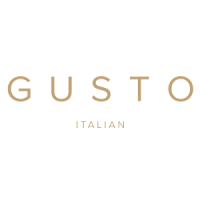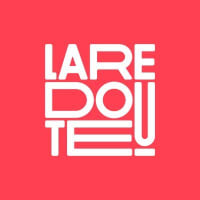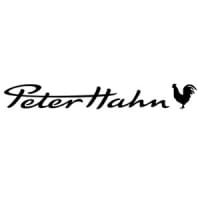ITAM + FinOps: A Unified Approach for IT Cost Optimization

The two practices of IT asset management (ITAM) and FinOps (cloud financial management) can be paired in a highly effective way to deliver valuable results. This can help optimize IT spend and the business value of those assets, all while aiding ITAM and FinOps practitioners, shares Cyndi Tackett, vice president of product marketing at Flexera. I’m guessing that you can relate to a common scenario.
It goes something like this: You’ve held onto a coupon (maybe clipped from a newspaper back in the day) or a discount code (perhaps sent by email from a favorite merchant). You go to pay for your order but forget to use the coupon. You miss out on the savings that were part of the reason you decided to make a particular purchase, only later realizing that what you bought cost more than you anticipated.
This happens all the time. Sometimes it’s for the buy-one-get-one deal for your favorite cereal at the grocery store. But sometimes–and far more significantly for today’s enterprises–it is for major expenses related to your IT estate, particularly cloud costs.
As IT becomes increasingly hybridized, blending on-premises and cloud deployments, finding cost efficiencies and using them is more important than ever. Doing so requires a unified approach across the organization. Making sure you optimize not just your IT spend, but the business value of those assets, is where the two practices of IT asset management (ITAM) and FinOps come together.
Today, the discipline of ITAM is pretty established, while that of FinOps is maturing; practitioners of each may not really know that the other exists and how it is relevant to them. But when they’re united, they can deliver valuable results. Consider how these two approaches can help drive value across your organization’s evolving hybrid IT estate.
See More: Switching from a FinOps Observability to a FinOps Orchestration Mindset
The Intersection of IT Strategy: ITAM and FinOps
IT asset management is a process of managing the hardware (hardware asset management; HAM), and software (software asset management; SAM) contracts across an IT estate to govern and optimize its use. This involves lifecycle tracking, managing license and contract issues and renewals, and purchase and support expenses. ITAM often focuses on keeping expenses flat, reducing costs, cost avoidance, and risk management.
Typically applied to on-premises deployments, ITAM brings visibility and accountability to IT spend through processes such as IT showback (demonstrating how much each department or cost center is spending on tech resources) and chargeback (billing those departments or cost centers for that usage). As more workloads move to the cloud, a modernized spin to optimizing IT spend comes from FinOps, which focuses on cloud financial management. FinOps doesn’t focus on absolute spend as much as it prioritizes being efficient with your spend to drive the greatest possible business value from it. As defined by the FinOps FoundationOpens a new window , “FinOps is an evolving cloud financial management discipline and cultural practice that enables organizations to get maximum business value by helping engineering, finance, technology and business teams to collaborate on data-driven spending decisions.” FinOps (which blends “finance” and “DevOps”) relies on a three-phase operating model, delivering accountability to cloud spend:
- Inform: Who is doing what, and where are they doing it within your IT estate?
This phase addresses those questions based on the premise that you can’t monitor, manage, or allocate spend if you don’t have your arms around what you’re spending and where that spend goes. Hopefully resonant with ITAM practitioners, in FinOps, the inform phase focuses on where money is being spent (e.g., by business unit or cost center) for cloud entitlements and license usage. This enables showback, chargeback, forecasting, and anomaly detection.
- Optimize: The visibility provided through the inform phase can help motivate cost centers to work through the optimize phase, which focuses on rates and usage.
Ultimately this drives two things: reducing the amount you use (e.g., the number of cores, how many gigs of RAM) and reducing the price that you pay (such as for software licenses and through vendor negotiations or available discounts, such as hybrid benefits).
- Operate: Focusing on continuous improvement and operations, processes, and automation help achieve your optimization goals. The processes may start manually, then become automated. The operation phase requires a scorecard–the key performance indicators (KPIs) to measure success.
For example, when focusing on a unit economics model, it may be possible to identify where cloud spend grew in absolute terms (more dollars spent), but where reliance on that technology helped drive down the cost per unit (such as a deliverable per consumer or per subscriber), showing the value of the cloud investment.
Common Goals for Efficient Hybrid IT Management
The disciplines of ITAM and FinOps share a focus on cost control measures. Each adds value to the other. Bringing them together is increasingly important to accommodate the complexities of a hybrid IT estate.
They have complementary capabilities that can drive value and return on investment while providing a comprehensive look at your IT environment and technology spend. The reality is that migrating to the cloud likely won’t drive cost savings in the first year. But you’ll get there.
It requires knowing how to find spend efficiencies, particularly for transient assets (such as cloud instances or containers). The process takes time but improves with automation and experience. Getting stakeholders–from across the business–on the same page is crucial to help manage your hybrid IT estate.
Bringing together ITAM and FinOps is a way to do so, while avoiding the siloed approach that’s all too common when departments work independently and if ITAM and FinOps teams function separately. Uniting them helps deliver clear data forecasts about usage needs for spend decisions and by rightsizing the IT estate (e.g., preventing overprovisioning), an enterprise can remain focused on innovation rather than on explaining spend to the finance team. See More: 5 Best Practices for IT Asset Management (ITAM) And IT Strategy
Collaborating to Drive Business Value
Evaluating organization-wide needs and getting executive buy-in can help create structural support for efficiency and innovation.
Establishing a cloud center of excellence (CCOE) offers businesses a centralized way to manage an organization’s cloud journey. Increasingly, reliance on CCOEs is becoming the norm. CCOEs typically include a cloud architect, also relying on expertise from their ITAM colleagues to help drive an organization’s cloud journey.
As found in the Flexera State of ITAM ReportOpens a new window , 69% of organizations have a cloud central team or CCOE. The vast majority (83%) of CCOEs include an ITAM or SAM member on their team. ITAM and FinOps practitioners have overlapping needs.
Bringing them together can help an organization shift away from a reactive approach to managing hybrid IT estates to a proactive approach–creating the processes to find and use every available discount and opportunity for optimization. The results benefit the entire organization. Are you trying to improve your IT cost optimization?
What strategies are you employing? Share with us on FacebookOpens a new window , TwitterOpens a new window , and LinkedInOpens a new window . Image Source: Shutterstock
MORE ON IT COST OPTIMIZATION:





